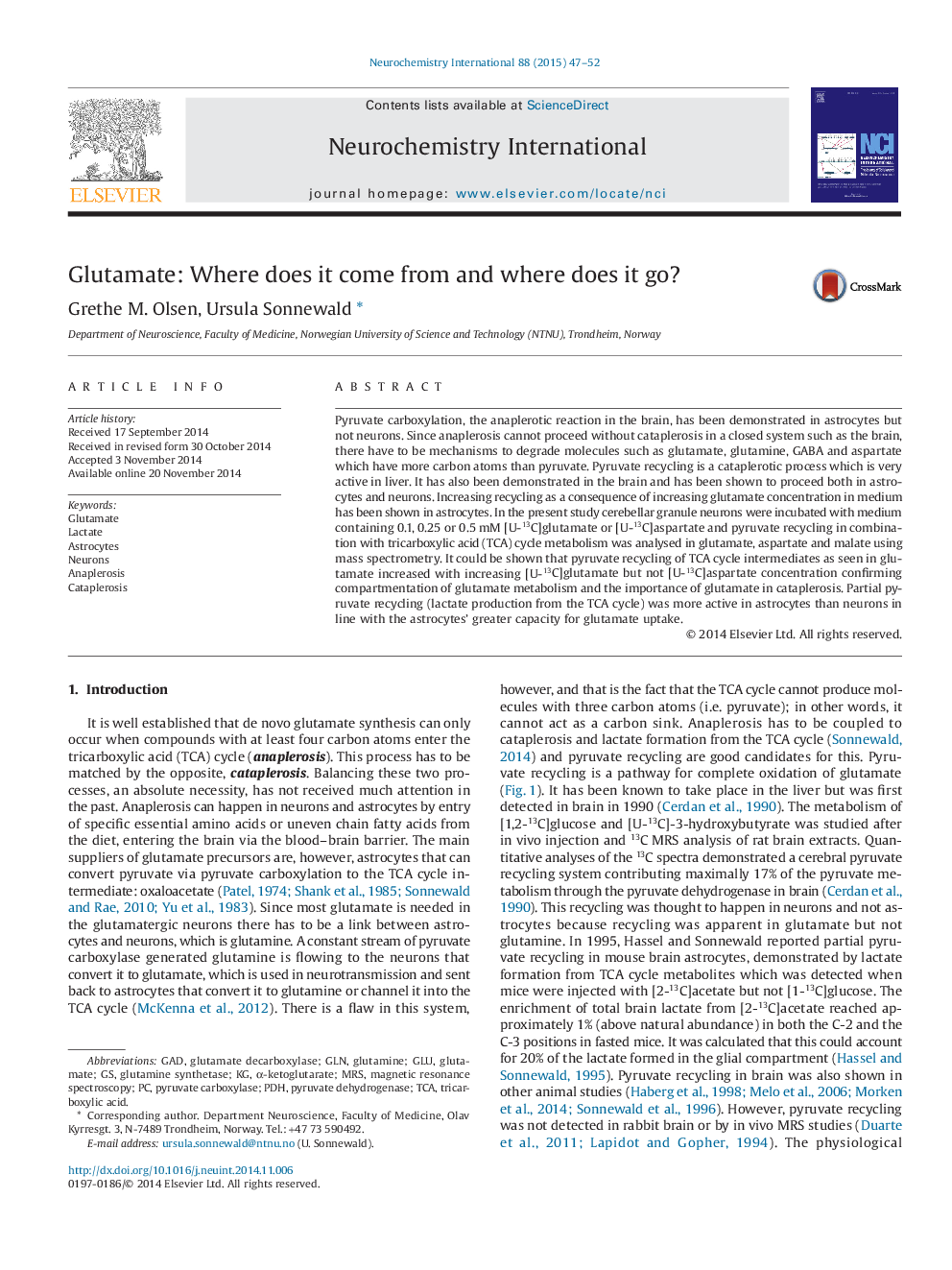| Article ID | Journal | Published Year | Pages | File Type |
|---|---|---|---|---|
| 2200457 | Neurochemistry International | 2015 | 6 Pages |
•Pyruvate carboxylation in astrocytes is important for glutamate synthesis.•Pyruvate carboxylation has to be matched by a cataplerotic mechanism.•Partial pyruvate recycling (PPR) generates lactate released to blood and lymph.•PPR increases with increasing glutamate concentration in astrocytes.•Full PR increases with increasing glutamate concentration in neurons.
Pyruvate carboxylation, the anaplerotic reaction in the brain, has been demonstrated in astrocytes but not neurons. Since anaplerosis cannot proceed without cataplerosis in a closed system such as the brain, there have to be mechanisms to degrade molecules such as glutamate, glutamine, GABA and aspartate which have more carbon atoms than pyruvate. Pyruvate recycling is a cataplerotic process which is very active in liver. It has also been demonstrated in the brain and has been shown to proceed both in astrocytes and neurons. Increasing recycling as a consequence of increasing glutamate concentration in medium has been shown in astrocytes. In the present study cerebellar granule neurons were incubated with medium containing 0.1, 0.25 or 0.5 mM [U-13C]glutamate or [U-13C]aspartate and pyruvate recycling in combination with tricarboxylic acid (TCA) cycle metabolism was analysed in glutamate, aspartate and malate using mass spectrometry. It could be shown that pyruvate recycling of TCA cycle intermediates as seen in glutamate increased with increasing [U-13C]glutamate but not [U-13C]aspartate concentration confirming compartmentation of glutamate metabolism and the importance of glutamate in cataplerosis. Partial pyruvate recycling (lactate production from the TCA cycle) was more active in astrocytes than neurons in line with the astrocytes' greater capacity for glutamate uptake.
